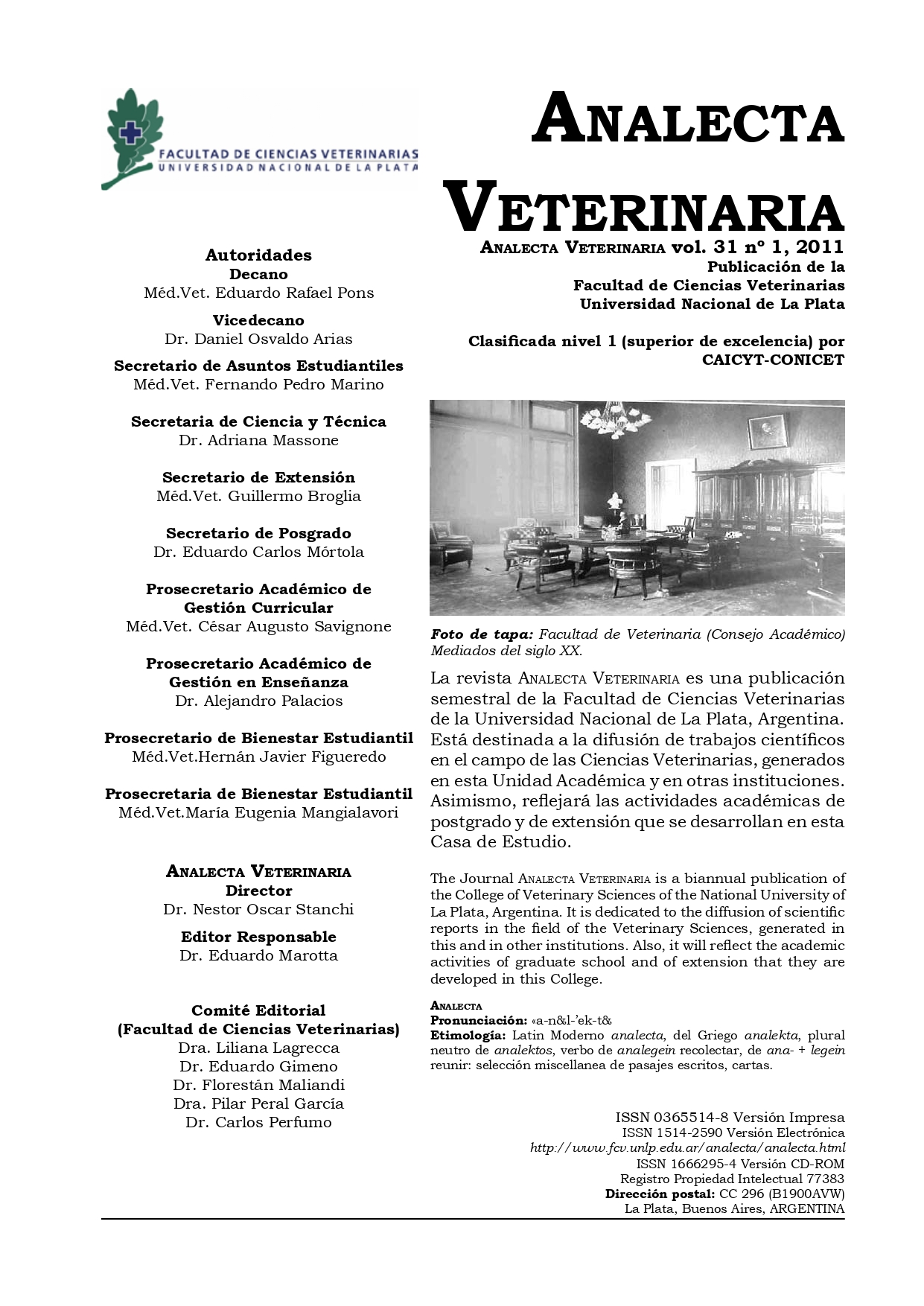Housing systems evaluation for immunodeficient mice under experience
Keywords:
flexible film isolators, invidividual ventilated cage (IVC)Abstract
Immunodeficient mice strains maintenance requires special and standarized equipments in order to assure their quality and to obtain reliable experimental results. The development of new technologies and equipments used to control the animal macro and microenvironment in facilities with no barrier systems allow to house small number of rodents along the experiment. Flexible isolators (FI) and individual ventilated cages (IVC) represents two equipments that are able to control environmental factors. The aim of this study was to evaluate FI and IVC efficiency when they are used to keep immunodeficient mice. Two SPF CBA/N-xid mice groups were housed one year in a FI and in an IVC respectively. Environmental and animals microbiological monitoring was performed. The cost, construction, durability, space requirements, maintenance processes, monitoring and technical procedures were evaluated and compared. The results show that although differences among these equipments, both are suitable for the maintenance of immunodeficient mice. However, the results also show that the IVC, though expensive, have advantages over flexible isolators.
Downloads
Metrics
References
El raton CBA/N xid como modelo animal de inmunodeficiencia Produccion y manejo Fabricio Maschi, Pilar Cagliada, Cecilia Carbone. Catedra de animales de Laboratorio y Bioterio. Facultad de Ciencias Veterinarias. Universidad Nacional de La Plata Calles 60 y 118 s/n (1900) La Plata Revista Química Viva. Número 1, año 9, abril de 2010. ISSN 1666-7948.
F Maschi, G Principi, S Milocco, JM Laborde, M Carriquiriborde, M Ayala, P Cagliada, Carbone C. Evaluación de un sistema de aisladores flexibles para el mantenimiento de ratones inmunodeficientes. Analecta Vet 2007. 27 (1): 30- 35.
CCAC [Canadian Council on Animal Care]. Guide to the Care and Use of Experimental Animals. 2nd ed. Ottawa Canada: CCAC. 1993.
Clark Derrel J. National Research Council. Guide for the Care and Use of Laboratory Animals. 1996; p.22-48.
Clough G. UFAW Handbook. The animal House: design, equipment and environmental control. UFAW. 1991; p. 108 -143.
Coates ME, Gustafsson BE. Germ Free Animals in Biomedical Research. 1984; p. 11-48.
Ferrer Bazaga S, Martinez Escandell A. SECALAnimales de Laboratorio: Prevención de riesgos en la exposición a agentes biológicos. 2003; p. 19-23.
Michael F. Festing W. The UFAW Handbook on the Care and Management of Laboratory Animals. Churchill Livingstone. 1976; p. 57-73.
Lawson T. LAT Manual de entrenamiento. American Association for Laboratory Animals Science. 2000.
Eaton P. UFAW Handbook. Higiene in the animal House. UFAW. 1991; p. 144-157.
Bennett M, Parks SR, Dennis MJ. Containment testing of negative pressure isolators used to house laboratory animals infected with BL3 agents. FELASA: Internationalisation and harmonization of laboratory animal care and use issues. 2004; p. 137-144.
Lipman NS, Corning BF, Saifuddin M. Evaluation of isolator caging systems for protection of mice against challenge with mouse hepatitis virus. Laboratory Animals. 1993; p. 134-140.
Perkins Scott E, Lipman NS. Characterization and Quantification of Microenvironmental Contaminants in Isolator Cages with a Variety of Contact Beddings. Contemporary Topics. 1995. 34 (5): 93-97.
Downloads
Published
How to Cite
Issue
Section
License
Authors retain the copyright and assign to the journal the right of the first publication, with the with the terms of the Creative Commons attribution license. This type of license allows other people to download the work and share it, as long as credit is granted for the authorship, but does not allow them to be changed in any way or used them commercially.

Analecta Veterinaria by School of Veterinary Sciences, National University of La Plata is distributed under a Creative Commons Attribution-NonCommercial-NoDeriv 4.0 International License.

























